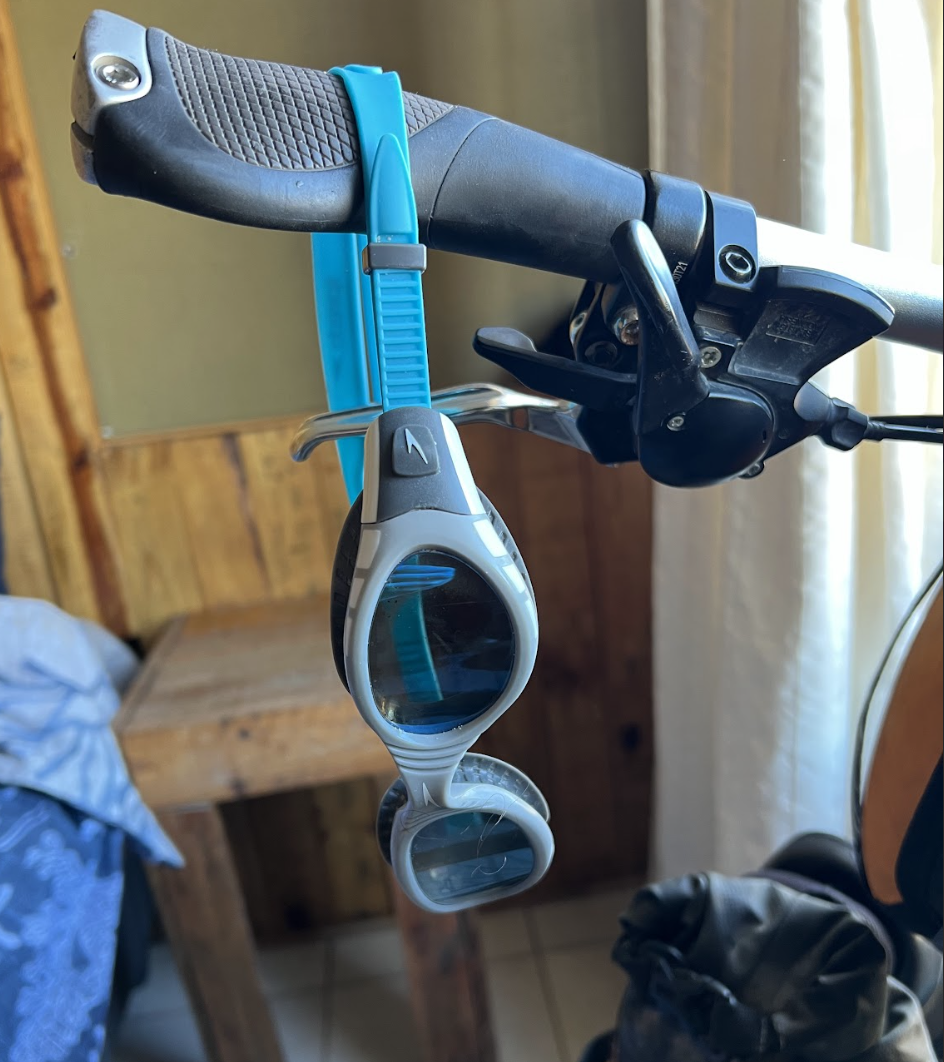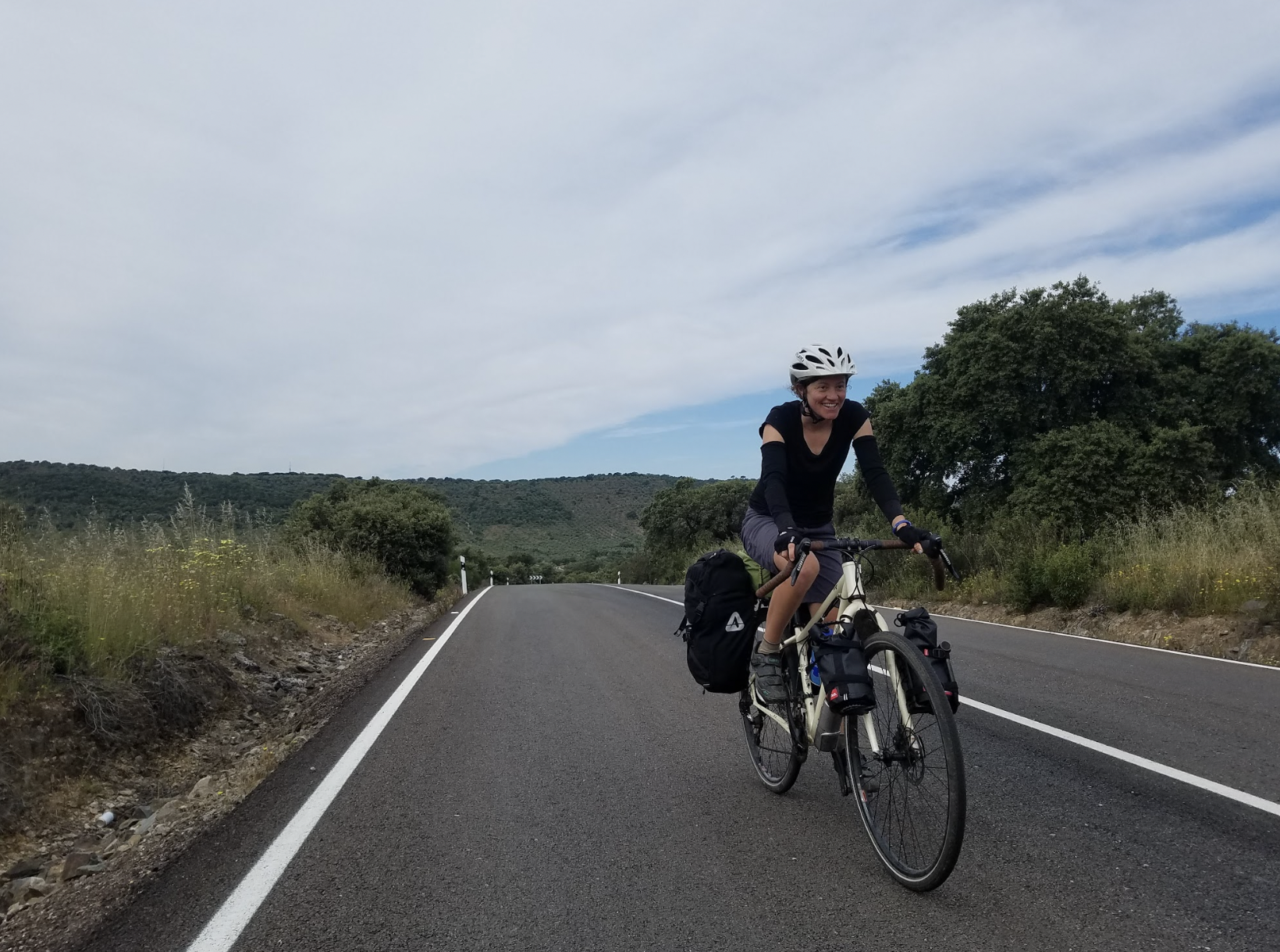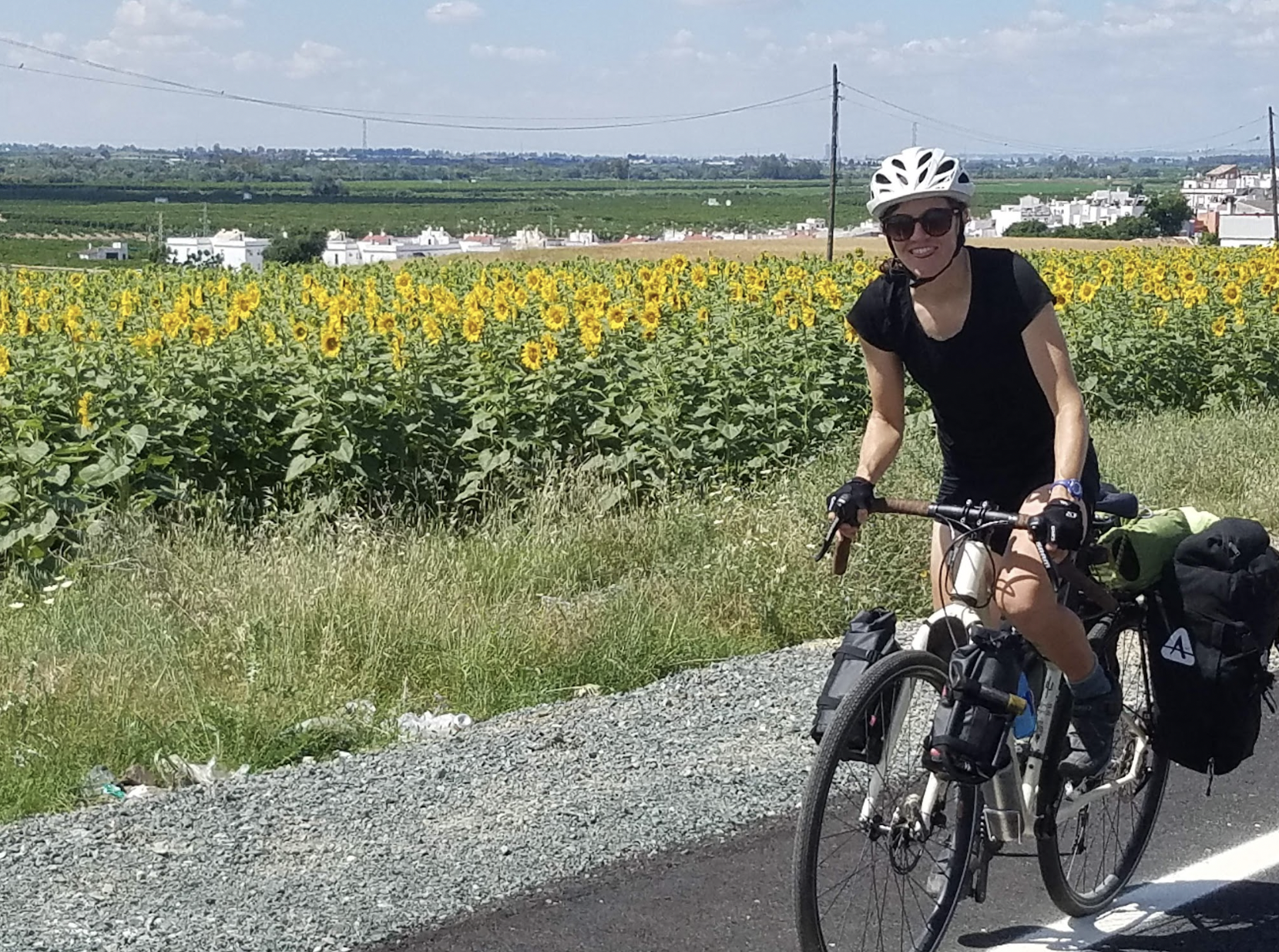Is Swimming Good Cross-Training for Cycling?
“My shoulders are going to give out,” I thought as I wrestled my loaded bike over tan, fist-sized rocks up another steep slope. I reminded myself to engage my core and took deep breaths, resting my head on my handlebars. I was hiking my bike around Lago Desierto, north of El Chalten in Argentina, with two German cyclists I had befriended a few days before. We could have waited 36 hours at the north side of the lake for the ferry to arrive, but patience has never been a virtue I possessed in large quantities. Apparently my new friends were similar.
It took us ten hours over a day and a half to cover 12 kilometers (seven miles). There were 45-degree slopes with loose rocks and large roots, occasionally requiring us to remove our panniers, hike the bike up the hill, then return for the bags. It was hard as hell, and an adventure I will never forget. But we had a near-constant view of the sapphire lake to our right, and the mountain and glaciers above. It was definitely worth it.
Somewhere in this nonsense, I realized that my background in swimming played a huge role in my ability to keep up, albeit with a lot of help from my friends. Without upper body strength from swimming, I probably wouldn’t have attempted this feat.

In the past, I treated my body like I treat computers. I just wanted it to work, and I didn’t care about the inner workings. As I’ve gotten older, I’ve learned more about the human body—mostly out of necessity for physical therapy and injury rehab and prevention. In an effort to dive deeper into this idea, I decided to interview an expert to discuss the overlap and benefits of swimming and cycling.
I talked with* Laura McNulty, a personal trainer and accomplished athlete who holds several records across different disciplines, including cycling, running, swimming, and horseback riding. She has overcome many obstacles, including injury, disease and overuse.
Laura has been professionally training clients in Northern California for 18 years, and is constantly deepening her extensive knowledge of the human body. Laura’s training methods focus on functional fitness and training the mind along with the body. We finally managed to talk over a tenuous connection while I was in Queenstown, South Africa and she was in Arcata, California.
***

*Responses have been lightly edited for clarity
Hollie: How did your interest in anatomy and kinesiology begin? Did you study formally or are you mostly self taught?
Laura: I started out as a runner, and getting to know how the body worked helped me run faster. I love the functional aspect of how integrated the body is, like the hip affects the heel, and so on. I studied Biology and Anatomy in college, and afterward took a course on Personal Training. I shy away from the term “personal trainer” to describe myself. I try to stay clear of fad workout programs. While they can benefit some people, they can break others. I say I “professionally train” people, and I work with a variety of clients, from young athletes to people 80 years old, all with a wide range of goals.
After college, I dove in deep, doing my own research and teaching myself. There are so many studies being done all the time! I will never be finished learning about the mechanisms and interconnectedness of the human body. I am just as fascinated now, at 55 years old, as I was at 20 years old.
Hollie: I know you as more of a cyclist, but you started as runner, then took up cycling, and then swimming?
Laura: Cycling was a natural progression.As most of us know, running can be hard on the body, especially joints. Tendons and ligaments get strong and tight from repeated ground reaction force (i.e. pounding the ground with our feet), but you have to be more flexible in those areas to be a good cyclist and swimmer. Running definitely helped me be a strong cyclist.
Hollie: Let’s talk about muscle groups. I know that swimming uses more upper body muscles than cycling does, but both are whole body workouts. Is swimming a good way to cross training for cyclists?

Laura: Both disciplines move in the sagittal plane (forward and backward), instead of side to side (with maybe the exception of the breast stroke kick). They also overlap in some of the muscle groups they use, like glutes, quads, and triceps. Both cycling and front crawl can be quad-dominant, while backstroke utilizes more of the hamstring.
Swimming is a great way to develop your upper body muscles, while cycling focuses more on the legs.The real benefit comes from the integrated movement you learn from swimming—moving your whole body efficiently, and integrating the top half and bottom half. If you can move your body fluidly in the pool, integrating across your midline from your pointed toes to your outstretched arms and twisted torso, you can move more efficiently and intuitively on the bike.
Another huge benefit to swimming is the cardiovascular benefits, which directly translate to the bike and most other sports. And, if you need a mental break from cycling, swimming is such a beautiful thing.
Laura: The mental break that you get from swimming can be meditative in a way that cycling rarely is, since we always have to think about road or trail conditions. But in a pool, or even in open water, all you have to think about is your form and breathing, and moving your body as one cohesive, efficient unit. Swimming is like moving yoga, stretching and reaching and pulling, motions you don’t normally do on the bike.
Hollie: Do swimming and cycling balance each other out well? Or do you think there are better cross-training methods for cyclists?
Laura: If you don’t need a mental break from the bike, and cycling is your main focus or you want to compete in a race, the best way to complement cycling is to do a 30-40 minute weight workout three times a week. Incorporate what you’re missing into your workouts. Put a band around the knees, squat and step side-to-side to engage the gluteus medium. Get some lateral movement in! Kettlebell workouts also help strengthen the back and other stabilizer muscles. Lifting weights is a great way to keep bones strong while keeping the rest of you — especially your mind — in top form.
***
Next time you have the chance to get in the water, go for it! make a splash. Let yourself float and move your arms around, let your mind wander. Whether you’re excited about your next bike tour, or feeling overwhelmed with life, swimming can be both invigorating and calming.
The other day, the sun came out while I was in the water and I could see my shadow on the bottom of the pool.I felt like a kid again. I felt connected to my surroundings and in touch with the twisting, reaching, and stretching of my body. This aspect of weightlessness helps me slow down and meditate on the moment. And strangely enough, I feel the same way when I am slowly going uphill on my loaded bike, surrounded by mountains, completely absorbed in the slow-moving present moment. By doing both, there is more balance to my movements, and both my mind and body feel stronger.

